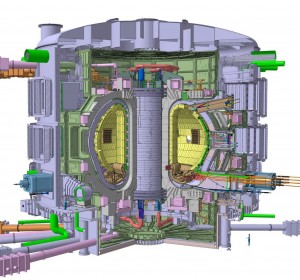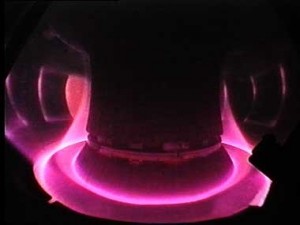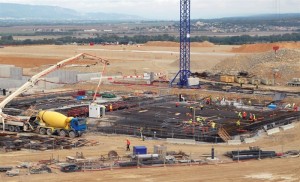Is Nuclear Fusion Feasible?
by Walker O’Brien
ITER, Latin for “the way,” is the international fusion reactor project in France and it has been hailed as the future of energy and international cooperation in the 21st century. This project is the culmination of the efforts of over 20 nations in designing, building and operating a fusion reactor in the south of France. ITER was started on 24 October 2007 when China, the EU, India, Japan, Korea, Russia and the USA signed the ITER agreement.
The ITER project could be the start of a new direction that the energy market could take, allowing us to reduce our global dependence on fossil fuels and bringing modern society into a new era of clean energy. Fusion reactors have the potential to end the energy crisis that has been plaguing humanity since we first discovered fossil fuels could be a thing of the past.
This project is being completed on a massive scale with over 25 participating nations each making contributions to the final product. This project has unfortunately experienced some delays that have pushed the completion date of the project back four years. Despite the delays, the ITER project is still providing all of the member nations with invaluable experience for the future of fusion power. This is because a project like this has never been attempted before by anyone. As a result of this the job of producing the parts necessary for the completion of the reactor has been portioned between the countries participating.
With the production of the components split up among the participating nations, this project hinges on the ability of the many member nations to be able to communicate and produce parts that will fit together; however, Jean Jacquinot from France’s Atomic Energy Commission has stated that “Communication is not ideal”.
As with any joint-project this ambitious and large in scale, there are bound to be problems that arise. And the ITER project is now starting to show the problems of multinational miscommunication on a large scale. The communication problems have come from the member nations not fully collaborating on the parts that they are making that must interlock for the reactor to work. With miscommunication like this spreading, the completion date for this project has been pushed back four years from the initial completion date in 2016 and may continue being pushed back.
To ensure that the project is completed properly and without errors, the ITER agreement has outlined the requirement for an assessment on the project every two years. The 2014 review has been very critical of the project, even more so than previous semi-annual assessments. The 2014 review focused much of its criticism on the communication between the member nations and the bureaucracy created to run the project. Communication is crucial in order for the thousands of pieces of the final reactor to function properly together. In addition to outlining communication problems, the 2014 review found the management team to be “inflexible and top-heavy” and that “inefficiencies were built in with the full consent of the parties.”
The schedule of the project continues to slip further and further away, raising the cost of the project. Even though the ITER officials say that the reactor will be able to be powered up by the end of 2020, few actually believe this estimate to be accurate. Officials in ITER fear that these delays and the poor assessments given to the progress will cause backers like the United States to remove their funding like they have threatened to do in the past.
Clery, Daniel. “New Review Slams Fusion Project’s Management.” Science Mag(2014): n. pag. Sciencemag.com. Web. 20 Apr. 2014. http://www.sciencemag.org/content/343/6174/957.full
DOI: 10.1126/science.343.6174.957
Further Reading:
Iter Construction Gathers Momentum
Iter.org


